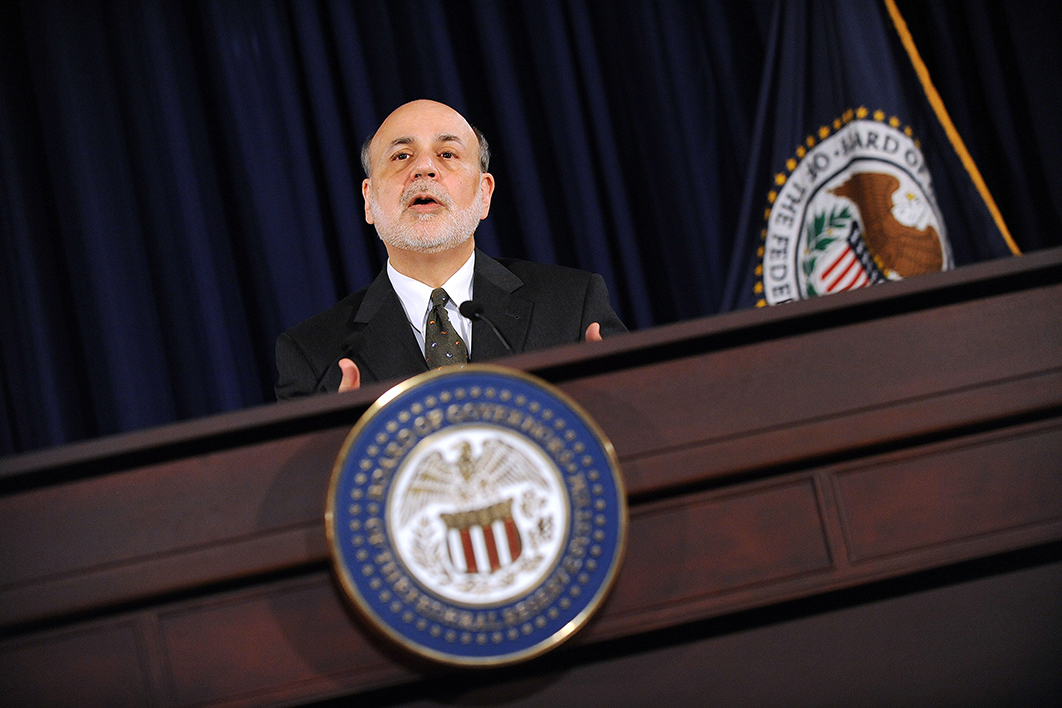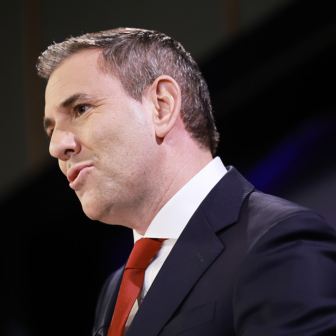Should Australia’s Reserve Bank resort to quantitative easing, the technique used by some of the world’s major central banks to increase economic activity and employment during the global financial crisis? And if it did, would that be a significant departure from past practice?
Under QE, central banks buy financial assets on a grand scale in order to bring down interest rates and, it is hoped, revive spending and boost economic activity. Journalists frequently refer to the technique as “unconventional,” emphasising the scale of asset purchases and the diversity of the assets involved. Not only are Treasury bills or notes and short-term government bonds among the assets purchased, but so are long-term government securities, mortgage-backed securities, commercial paper and company bonds.
Ben Bernanke, the former chairman of the US Federal Reserve, is widely believed to have fashioned the term. But in his bestselling account of the GFC, The Courage to Act (2015), Bernanke claims that it was the “financial world” that “persisted in calling the tool quantitative easing or QE.” He and his colleagues at the Federal Reserve preferred to call it “credit easing.”
Mervyn King, the former governor of the Bank of England, sees nothing unconventional in QE. “If history is what happened before you were born, then many of the commentators must be extremely young,” he writes in his post-GFC book The End of Alchemy (2016). “Open-market operations to exchange money for government securities have long been a traditional tool of central banks, and were used regularly in the UK during the 1980s.”
What perhaps was new, King conceded, was the scale of the asset purchases undertaken by central banks during the crisis. The Bank of England’s bond purchases, for example, amounted to £375 billion, equivalent to 20 per cent of GDP, while the Federal Reserve’s were in the order of US$2.7 trillion, or around 15 per cent of GDP. Asset purchases of this magnitude were necessary, he explained, because governments and central banks directly control less than 10 per cent of the money supply and so “a large percentage increase in the printing of money is required to create even a moderate increase in the total money supply.”
While the extent of asset purchases by central banks may have been unprecedented, the idea of conducting open-market operations — even on such a scale — was not entirely novel. In 1930, at the outset of the Great Depression, John Maynard Keynes devoted an entire section of his two-volume work, A Treatise on Money, to discussing the merits of conducting “open-market operations to the point of saturation.” His “remedy,” he declared, “in the event of the obstinate persistence of a slump would consist… in the purchase of securities by the central bank until the long-term market rate of interest had been brought down to the limiting point.” In fact, he advised that open-market operations in certain circumstances should be “carried out à outrance,” or unsparingly.
The Bank of England had been undertaking open-market operations since at least the late nineteenth century, the aim being to make its bank rate effective in the face of the external flows of money that were putting pressure on the exchange rate. They were also used to smooth out the effects of seasonal fluctuations. By the 1920s, the bank was inclined to use open-market operations as an instrument of monetary policy rather than the bank rate, its traditional policy instrument.
The US Federal Reserve went through a somewhat similar transition. From 1922, it was using open-market operations increasingly to influence credit growth, so much so that a committee — the precursor of today’s Open Market Committee — was created to coordinate the market operations of the twelve reserve banks that comprise the Federal Reserve system.
Open-market operations weren’t needed on the same scale in Australia during the GFC because the crisis here didn’t reach the dimensions it did elsewhere. But open-market operations here also have a long, though more problematic, history. The first recorded effort occurred in the early 1920s when the Australian Notes Board — a statutory body responsible for the note issue, chaired by the governor of the Commonwealth Bank — sold government securities with the intention of reducing the volume of currency notes in circulation. The aim was to deflate the domestic price level in preparation for the return to the gold standard. The operation was small and not altogether successful.
Further attempts were made by the Commonwealth Bank in the 1930s, but the results were mixed. In February 1936 the bank attempted to sell Treasury bills to the public in order to control the recovery from the Great Depression, which was now gaining pace. But two banks, the Wales and the Adelaide, were fearful that they would lose deposits. They raised their interest rates on fixed deposits, and very few securities were sold. The following year, though, as the recovery continued to accelerate, the Commonwealth Bank successfully sold government bonds on the open market, and when a recession threatened in 1938, it purchased bonds with the aim of stabilising activity.
In the 1920s and 1930s it was thought that market operations would fail in Australia because of the immaturity of local money and capital markets. Any substantial buying and selling of government securities by the monetary authorities, it was argued, would cause excessive fluctuations in bond prices and yields.
This was the conclusion reached by the royal commission into the Australian monetary and banking systems when it reported in 1937. Though it admitted that monetary policy conducted by market operations was likely to be more effective and efficient than monetary policy conducted by the application of direct controls — such as controls on bank assets, interest rates and bank lending — it concluded that the market for government securities was too narrow. The commission recommended that banks should be required to lodge a proportion of their deposits at the central bank, the proportion varying according to whether the central bank wanted to tighten or ease monetary conditions.
With the second world war, a comprehensive system of monetary controls was introduced under the emergency wartime provisions of the Constitution. In 1945, parliament passed the first Banking Act, allowing the controls to be made permanent.
Until the deregulation of the financial system in the 1980s, monetary policy continued to be conducted principally by direct controls, though with a diminishing impact as non-banking financial institutions — such as building societies, credit unions, finance companies and merchant banks, which could avoid the controls imposed on the banks — won business from the banks. Major factors behind the decision to deregulate the financial system included the fact that the Reserve Bank’s monetary policy was embracing an ever-diminishing area of the financial system, and the tendency of direct controls to favour the less-efficient sectors of the financial system were major factors behind the decision to deregulate the financial system.
With the deregulation of bank interest rates, the introduction of tender systems for the marketing of government securities, and the floating of the dollar, the Reserve Bank was able to conduct market operations more successfully. Now, by undertaking market operations designed to control the rate that banks and other financial institutions charge each other for the use of overnight funds — the cash rate — the Reserve Bank is able to influence the level of interest rates throughout the financial system. And, of course, the nature and scale of that influence reflects the bank’s view of how great the need is for intervention. •




